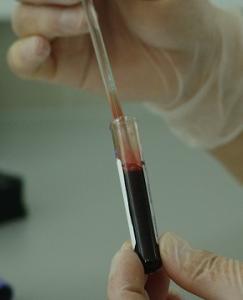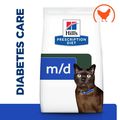This is the second of four posts aiming to increase understanding and awareness of diabetes in pets. Last week's post set the background to diabetes and will hopefully have given you a basic understanding of what causes the disorder. Spotting diabetes early is vital if you want to prevent the long-term damage that high blood sugar levels will cause if left undiagnosed.
What are the main signs of diabetes?
- A sudden increase in appetite but accompanied by weight loss or maintenance of weight.
- Increased urination and excessive thirst, with possible dehydration.
- A strange, chemical smell on the breath, similar to nail polish remover.
- General weakness and lethargy.
What causes these symptoms?
When the cells in an animal's body cannot take up glucose from the bloodstream, the animal will initially eat more in order to compensate for the lack of available energy. Unfortunately this only further increases their blood sugar level and so the body has to find another source of energy for its cells. Fat reserves are the next option, so stored fat is broken down and used to fuel cell processes. This keeps the animal going but usually causes sudden weight loss. Some pets with early diabetes may only have partially reduced responses to insulin (Type 2), or their pancreas may still be producing some insulin that the cells can respond to (Type 1); in both cases, increased appetite will provide plenty of sugar for responding cells to absorb and the fat reserves remain untouched so there is no weight loss. In advanced undiagnosed cases, the animal becomes malnourished and loses its appetite.
When high levels of glucose persist in the bloodstream the kidneys struggle to reabsorb it and when their capacity is exceeded, the sugar passes out in urine. Glucose is concentrated in the urine along with other waste products and is then diluted with large volumes of water which the kidneys filter from the bloodstream. Affected pets need to pass urine more often and may have the odd accident indoors. If this isn't normal for your pet (assuming they are fully house-trained), you should always try to find out why- it probably isn't misbehaviour. In order to compensate for the increased loss of water in urine, pets will need to drink more. If there isn't enough water available they may rapidly become dehydrated and need urgent veterinary attention.
In more advanced cases, a chemical-like odour on the breath is a sign of a potentially fatal condition which arises from using fat as a source of energy for the body. Chemicals called ketones are produced when fats are used for energy, and high concentrations cause the condition 'Ketoacidosis'. The blood of an affected animal becomes acidic, disrupting the body in many ways. If left untreated, an animal will become progressively weaker, struggle to breathe and may eventually fall into a coma and die.
When the body can't access and metabolise (process) glucose, the effects are very similar to starvation as the body isn't getting the energy it needs. Weakness and lethargy both stem from lack of glucose and an animal will become quieter, sluggish and sleep more. In more serious cases, high levels of blood glucose and fatty substances like cholesterol lead to a wide range of body damage including formation of cataracts causing loss of vision, cardiovascular disease, nerve and kidney damage.
Diagnosis
As owners, it is our responsibility to keep an eye on our pets' health and we should be able to spot any of the above changes fairly easily. Getting your pet checked out as early as possible gives them the best chance of avoiding long-term damage and suffering. While weight loss, increased urination, lethargy and weakness are fairly general signs of illness, it doesn't always point to diabetes. For this reason, a combination of urine and blood tests (sometimes others when dealing with a cat) will be used for an accurate diagnosis.
As discussed, the high level of glucose in the blood surpasses the amount the kidneys can successfully reabsorb back into the bloodstream, so it is lost in urine. Often, urinary tract infections and genital itching can go hand in hand with undiagnosed diabetes because the vast amount of sugar provides an excellent food source for microbes. A positive result for sugar in an animal's urine is a good indication of diabetes. However, there are other problems that could lead to sugar being passed out, so a blood test is required to confirm the results and show a consistently elevated concentration of glucose.
Next week, we will cover the different areas to be addressed when managing diabetes in our pets.
Pet Diabetes Month Part 1: What is Diabetes?
Pet Diabetes Month Part 2: Signs & Symptoms
Pet Diabetes Month Part 3: Managing Diabetes
Pet Diabetes Month Part 4: Complications & Conditions Linked to Diabetes
Written by: Danielle









